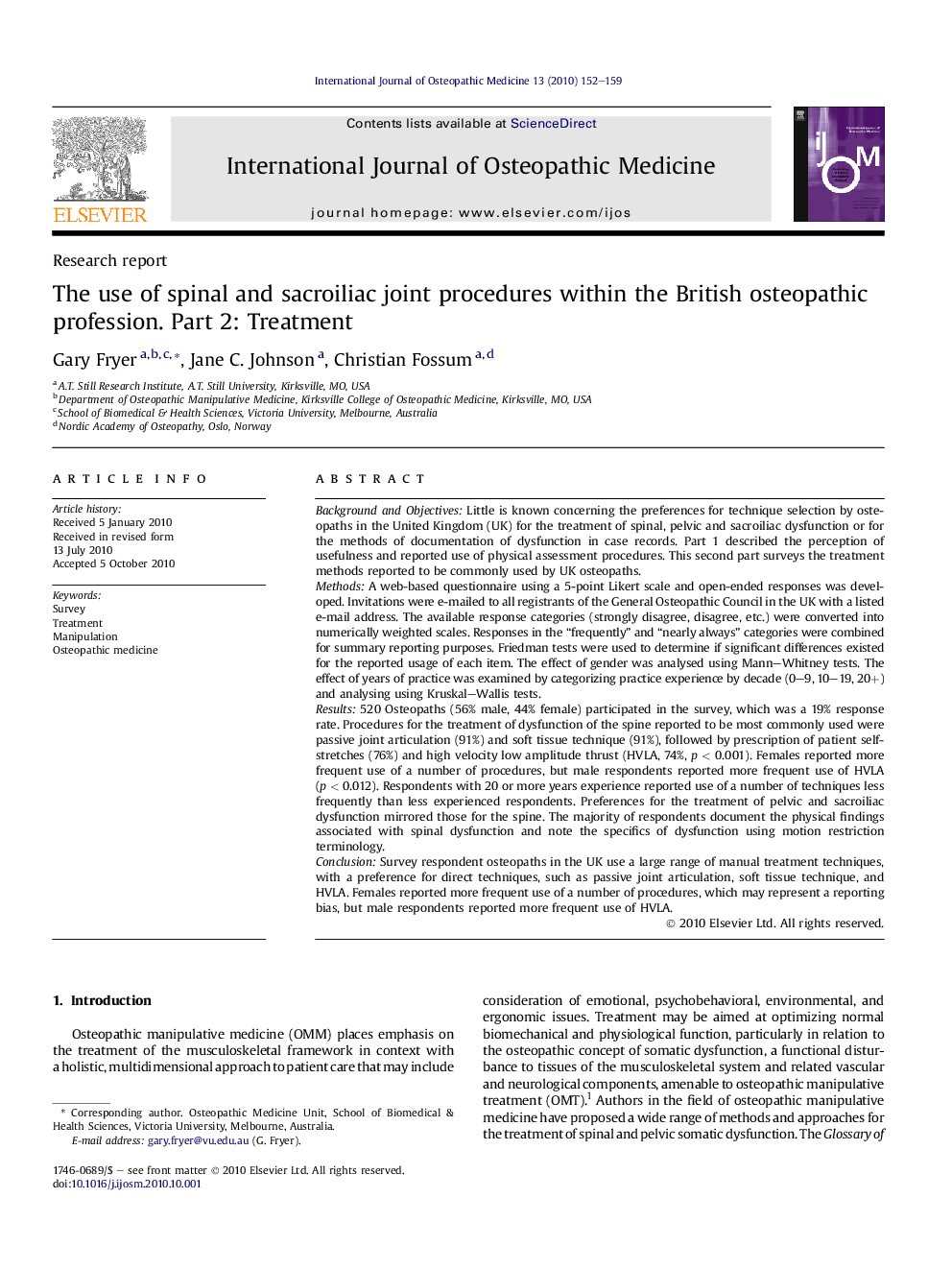| Article ID | Journal | Published Year | Pages | File Type |
|---|---|---|---|---|
| 2618885 | International Journal of Osteopathic Medicine | 2010 | 8 Pages |
Background and ObjectivesLittle is known concerning the preferences for technique selection by osteopaths in the United Kingdom (UK) for the treatment of spinal, pelvic and sacroiliac dysfunction or for the methods of documentation of dysfunction in case records. Part 1 described the perception of usefulness and reported use of physical assessment procedures. This second part surveys the treatment methods reported to be commonly used by UK osteopaths.MethodsA web-based questionnaire using a 5-point Likert scale and open-ended responses was developed. Invitations were e-mailed to all registrants of the General Osteopathic Council in the UK with a listed e-mail address. The available response categories (strongly disagree, disagree, etc.) were converted into numerically weighted scales. Responses in the “frequently” and “nearly always” categories were combined for summary reporting purposes. Friedman tests were used to determine if significant differences existed for the reported usage of each item. The effect of gender was analysed using Mann–Whitney tests. The effect of years of practice was examined by categorizing practice experience by decade (0–9, 10–19, 20+) and analysing using Kruskal–Wallis tests.Results520 Osteopaths (56% male, 44% female) participated in the survey, which was a 19% response rate. Procedures for the treatment of dysfunction of the spine reported to be most commonly used were passive joint articulation (91%) and soft tissue technique (91%), followed by prescription of patient self-stretches (76%) and high velocity low amplitude thrust (HVLA, 74%, p < 0.001). Females reported more frequent use of a number of procedures, but male respondents reported more frequent use of HVLA (p < 0.012). Respondents with 20 or more years experience reported use of a number of techniques less frequently than less experienced respondents. Preferences for the treatment of pelvic and sacroiliac dysfunction mirrored those for the spine. The majority of respondents document the physical findings associated with spinal dysfunction and note the specifics of dysfunction using motion restriction terminology.ConclusionSurvey respondent osteopaths in the UK use a large range of manual treatment techniques, with a preference for direct techniques, such as passive joint articulation, soft tissue technique, and HVLA. Females reported more frequent use of a number of procedures, which may represent a reporting bias, but male respondents reported more frequent use of HVLA.
